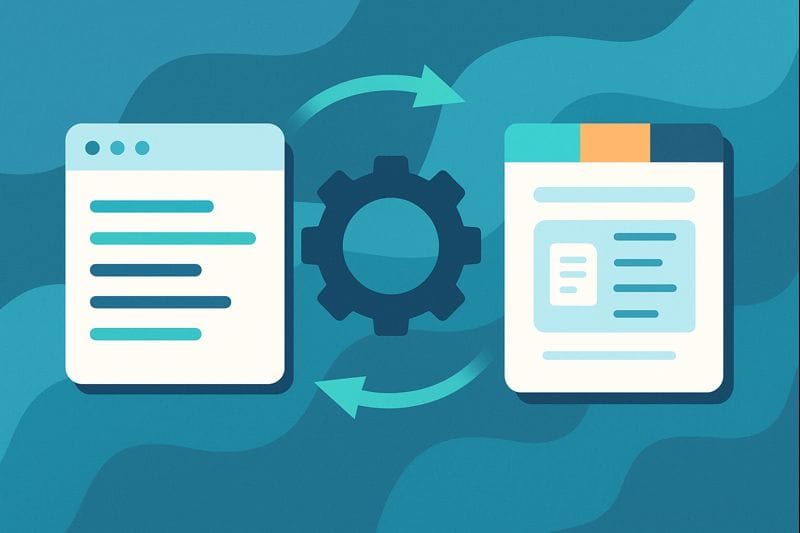Key Takeaways
- Adding a financing page to your business website can significantly improve conversion rates and customer trust.
- Offering a variety of financing options is crucial to cater to different customer needs and preferences, enhancing user experience and business growth.
- Carefully choosing and presenting the right content on your financing page can effectively communicate your financing options and procedures to customers.
- Following a detailed step-by-step guide can simplify the process of adding a financing page to your website.
- Designing a user-friendly financing page encourages user engagement and conversions.
- SEO optimization of your financing page can enhance visibility, attract more visitors, and improve rankings on search engines.
- Integrating various payment options on your financing page provides convenience and flexibility to customers, which can lead to increased sales.
- Regularly measuring the performance of your financing page using analytics can help you understand its effectiveness and make necessary adjustments for improvement.
- Real-life examples provide valuable insights into the successful integration and optimization of a financing page.
- Maintaining a high standard of expertise, authoritativeness, and trustworthiness in your content is key to fulfilling search engine requirements and gaining customer confidence.
Introduction
In today's digital age, having a robust online presence is crucial for businesses of all sizes. One essential element that many businesses overlook is the inclusion of a dedicated financing page on their website. A financing page serves as a crucial interface between your business and potential customers, providing them with necessary information about the various financing options available to them. It's more than just a page; it's a tool that can significantly enhance customer experience, boost conversion rates, and ultimately drive business growth.
Including a financing page on your business website is not merely a trend, but a strategic move that can give you a competitive edge. From small startups to large corporations, companies that offer clear and comprehensive financing options are often seen as more trustworthy and customer-centric. It's an innovative way to show potential customers that you understand their needs and are willing to provide flexible payment solutions.
This article will guide you through the importance of adding a financing page to your business website, how to do it, and how to optimize it for maximum benefits. Whether you're a novice or a pro in digital business operations, you'll find this guide insightful and practical.
Why Your Business Website Needs a Financing Page
In the competitive business landscape, every detail matters - including how you present financing options on your website. A dedicated financing page can be a game-changer for your business, and here's why:
- Enhanced Customer Trust: By providing clear, comprehensive information about your financing options, you show transparency, which builds customer trust. Customers appreciate businesses that understand their financial needs and are up-front about their offerings.
- Increased Conversion Rates: A well-designed financing page can simplify the customer journey. When customers understand their financing options, they are more likely to complete their purchase, thus increasing conversion rates.
- Competitive Advantage: Not all businesses offer clear financing information on their websites. By having a dedicated financing page, you differentiate yourself from competitors, offering an edge in the market.
- Improved Customer Experience: A financing page makes it easy for customers to find the information they need, resulting in a smoother, more enjoyable user experience.
- Attraction of Larger Purchases: Financing options can make expensive items more affordable for customers by breaking down payments, potentially leading to higher-ticket sales.
In summary, a financing page is a strategic move that can significantly enhance your business's online success.
Understanding the Importance of Website Financing Options
In today's dynamic business environment, customer experience is key to standing out from competition and driving business growth. One significant way of enhancing this experience is by offering diverse financing options on your website.
- Cater to Diverse Needs: Different customers have different financial capabilities and preferences. Offering a variety of financing options ensures you cater to these diverse needs, making your business more inclusive and accessible.
- Boost Sales: Flexible financing options can encourage customers who may otherwise be hesitant due to cost concerns. This can lead to increased sales and revenue.
- Improve Customer Retention: When customers find a business that caters to their financial needs and preferences, they are more likely to return for future purchases. This improves customer loyalty and retention.
- Enhance Reputation: Offering multiple financing options signals that your business is stable, reliable, and customer-centric. This can enhance your reputation and attract more customers.
- Drive Business Growth: Ultimately, by boosting sales and improving customer retention, offering diverse financing options can fuel business growth. It's a strategic investment that can yield significant returns in the long run.
Choosing the Right Content for Your Financing Page
Creating a financing page involves more than simply listing your available financing options. It's about providing relevant and comprehensive information that is clear, easy to understand, and beneficial to your customers. Here are some tips to help you curate the right content for your financing page:
- Understand Your Audience: Identify your target customers' needs and preferences. This will help you tailor your content to suit their financial capabilities and concerns.
- Clear Explanation of Options: Each financing option should be explained clearly. Define any financial terms and provide examples or scenarios to help customers understand how each option works.
- Transparency: Be clear about all terms and conditions associated with each financing option. Transparent information about interest rates, repayment schedules, and potential penalties builds trust and reassures customers.
- Ease of Application: Provide detailed, step-by-step guidance on how to apply for each financing option. This reduces potential friction and makes the process easier for customers.
- Contact Information: Always include contact information or a dedicated support channel for customers to reach out if they have any questions or concerns. This shows you value their experience and are there to support them.
The right content can make your financing page not only informative but also a powerful tool for customer engagement and conversion.
Step-by-Step Guide to Adding a Financing Page to Your Website
Adding a financing page to your website can be a seamless process with the right steps. Here's a detailed guide to walk you through the process:
- Plan Your Content: Understand your audience's financing needs and preferences. List out all the financing options you offer, and prepare clear descriptions for each. Remember, transparency is key, so include all necessary details such as interest rates, repayment schedules, and potential penalties.
- Design Your Page: Work with your web designer to create a layout that is easy to navigate and attractive. Break up the information into sections or tabs for each financing option. Use bullet points, infographics, or short paragraphs to make the information easily digestible.
- Add Screenshots or Examples: Visual aids can help visitors understand the financing options better. For example, you can provide screenshots of the application process or examples of repayment scenarios.
- Integrate with Your Website: Once your page is ready, integrate it into your website. Make sure it's easily accessible from the main menu or footer.
- Test Your Page: Before going live, test your page to ensure it works correctly on various devices and browsers. Check all links, forms, and interactive elements to confirm they function properly.
- Go Live: Once you've tested your page and are satisfied with its performance, it's time to go live. Announce the new addition to your website through your usual communication channels — email marketing, social media, etc.
- Monitor and Update: Keep an eye on your analytics to understand how visitors are interacting with your page. Make necessary adjustments based on user behavior and feedback.
Remember, your financing page is not a set-and-forget aspect of your website. Regularly review and update the content to ensure it remains relevant, accurate, and appealing to your customers.
In conclusion, a well-executed financing page can significantly enhance your customer experience, build trust, and ultimately drive sales and business growth. It's a strategic investment worth making for your business.
Best Practices for Designing a User-Friendly Financing Page
Designing a user-friendly financing page is crucial to effectively communicate your financing options and encourage user engagement and conversions. Here are some best practices to consider:
- Clarity and Simplicity: Avoid financial jargon and use simple, clear language to describe each financing option. Break down complex information into easy-to-understand bullet points or short paragraphs.
- User-Friendly Design: A clean, intuitive layout ensures users can navigate your page easily. Use well-organized sections or tabs for each financing option and ensure all clickable elements are responsive and functional.
- Visual Aids: Infographics, charts, or icons can make information more digestible and engaging. They can also break up text-heavy content and make your page more visually appealing.
- Transparency: Clearly display all terms and conditions, interest rates, repayment schedules, and potential penalties for each financing option. This builds trust and helps users make informed decisions.
- Call to Action (CTA): Include clear and compelling CTAs to guide users towards applying for a financing option. This could be as simple as a button saying "Apply Now" or "Learn More".
- Mobile Optimization: Ensure your page is optimized for mobile devices. A significant portion of your audience will access your page on their smartphones, so a mobile-friendly design is essential.
- FAQ Section: Include a FAQ section addressing common questions about your financing options. This can save users time and reduce the need for them to reach out for support.
- Contact Information: Always provide clear contact information or a dedicated support channel for users to reach out with any questions or concerns.
By implementing these best practices, you can create a financing page that not only informs but also engages your users, guiding them smoothly towards conversion.
Optimizing Your Financing Page for Search Engines
Search Engine Optimization (SEO) is crucial to increase your webpage's visibility on search engines. Here's how you can optimize your financing page:
- Keyword Research: Identify primary and secondary keywords that your target audience might use when searching for financing options. Tools like Google Keyword Planner or SEMrush can help. Words like "financing options," "loan terms," or "interest rates" could be relevant.
- Content Optimization: Incorporate the identified keywords naturally into your content. Overstuffing can lead to penalties, so aim for a keyword density of about 1-2%. Ensure your content provides value to readers and answers their potential questions.
- Meta Descriptions and Title Tags: These are crucial for SEO. Your title tag should be a concise and accurate summary of your page, including your primary keyword. Meta descriptions should be compelling, give a brief overview of the page, and incorporate primary and secondary keywords.
- Header Tags: Use header tags (H1, H2, H3) to structure your content. Include keywords in your headers where it makes sense but avoid keyword stuffing.
- Alt Text for Images: If your page has visuals or infographics, include alt text with relevant keywords. This helps search engines understand the image content.
- Internal Linking: Link to other relevant pages on your website. This helps search engines understand the structure of your site and can boost the ranking of other pages.
- Mobile-Friendly: Ensure your page is responsive and mobile-friendly. A significant portion of searches come from mobile devices, and search engines favor mobile-friendly pages.
- Page Loading Speed: Slow loading speeds can impact your search engine ranking and user experience. Optimizing images, enabling browser caching, and reducing redirects can improve loading speed.
Remember, SEO is a continuous process. Monitor your page's performance and adjust your strategy as needed to maintain high visibility.
Integrating Payment Options on Your Business Website
Offering a variety of payment options on your business website not only enhances the customer experience but also increases the likelihood of conversions. Having diverse payment methods accommodates different customer preferences, potentially expanding your customer base.
Follow these steps to integrate payment options:
- Identify Payment Options: Identify the payment methods your customers prefer. Credit and debit cards, PayPal, and mobile payment options like Apple Pay or Google Pay are common choices.
- Partner with Payment Processor: Choose a payment processor that supports your chosen payment methods. They'll handle the transaction process, ensuring secure and efficient payments.
- Integration: Integrate the payment processor into your website. This usually involves adding a payment gateway, which facilitates the transaction between your website and the payment processor. This can often be accomplished with plugins if you're using a platform like WordPress, or you may need a developer's help.
- Testing: Before going live, thoroughly test each payment method to ensure a smooth transaction process.
Remember, the easier you make it for customers to pay, the more likely they are to complete their purchase. Offering multiple payment options is a simple yet effective way to improve the user experience and increase sales.
Measuring the Success of Your Website's Financing Page
To assess the success of your financing page, it's essential to leverage analytic tools. Here's how to go about it:
- Set Clear Goals: Identify what success looks like for your financing page. This could be increasing the number of completed applications, reducing the bounce rate, or improving the time spent on the page.
- Google Analytics: Use this tool to monitor key metrics like page views, bounce rate, session duration, and conversion rate. These metrics provide valuable insight into user behavior on your page.
- Conversion Rate: This is the percentage of visitors who complete a desired action, like filling out a financing application. A higher conversion rate indicates a more effective page.
- Bounce Rate: If your bounce rate is high, users might be finding your page unhelpful or confusing. Consider improving your page layout or content clarity.
- Session Duration: The amount of time users spend on your page can indicate their level of interest. If session durations are short, your content might not be engaging enough.
- User Flow: This shows the path users take through your site. If users aren't reaching or spending time on your financing page, you might need to improve site navigation or internal linking.
- Make Adjustments: Use these insights to make necessary adjustments. This could involve improving your content, optimizing for mobile, or simplifying the application process. Remember, measuring success is an ongoing process, not a one-time task. Regularly check your metrics and adjust as necessary to continually improve your financing page's performance.
Case Study: Successful Financing Page Integration
Let's take a look at the HomeFix, a home improvement business that successfully integrated and optimized a financing page on their website.
- Strategies: HomeFix identified a need for a dedicated financing page to better serve their customers. They conducted extensive keyword research and optimized their page content, title tags, and meta descriptions for SEO. They integrated several popular payment options, focusing on secure and user-friendly transactions. They also ensured their page was mobile-friendly and fast-loading.
- Results: Post-optimization, HomeFix saw an impressive 35% increase in financing applications and a 20% decrease in their bounce rate within three months. They also noticed a significant improvement in their search engine ranking for targeted keywords.
- Lessons Learned: HomeFix learned the importance of continuous SEO efforts and regular performance tracking. They found that offering multiple payment options greatly improved customer satisfaction and increased conversions. They also recognized the importance of a mobile-friendly, fast-loading page to retain users and improve SEO.
HomeFix's successful financing page integration highlights the importance of understanding your audience, optimizing for search engines, providing diverse payment options, and continually monitoring and adjusting your strategies.
In conclusion, integrating various payment options on your financing page and optimizing it using analytics can significantly enhance your business. It improves user experience, broadens your customer base, and boosts conversion rates. Therefore, it's highly recommended to add and optimize a financing page on your business website. Start by identifying your customers' preferred payment methods, partnering with a reliable payment processor, and continuously measure and adjust your page's performance for optimal results. Don't miss out on the opportunity to elevate your business to the next level.






